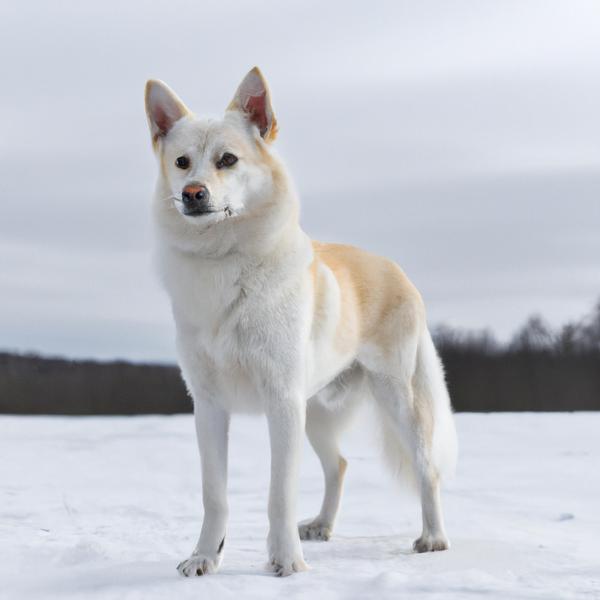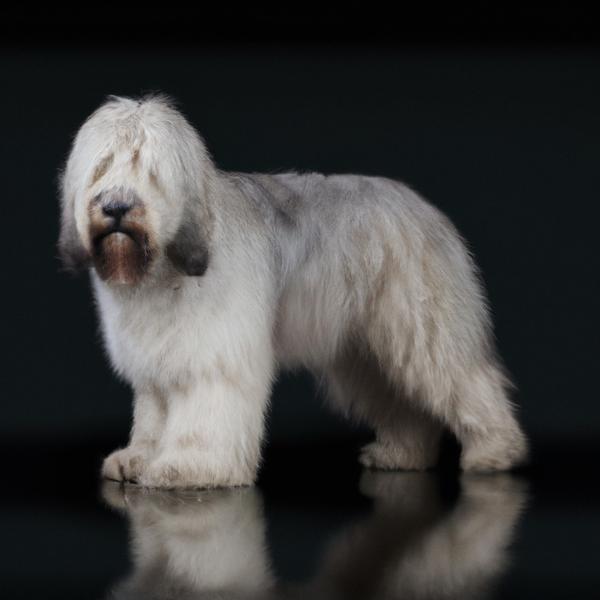Eskijack vs. Havaton: Breed Differences and Similarities
Hypoallergenic
Are Eskijacks or Havatons hypoallergenic, or neither?
Unfortunately, the Eskijack is not hypoallergenic, making it not a good choice for a dog lover who suffers from pet allergies.
While no dogs are truly 100% hypoallergenic, Havatons are about as close as it gets, making them an ideal pet if you are an allergy sufferer.
Temperament
What are the personalities of Eskijack and Havaton dogs?
Stubborn
Independent
Energetic
Protective
Alert
Courageous
Intelligent
Friendly
Cheerful
Playful
Intelligent
Responsive
Affectionate
Lively
Gentle
Trainable
Companionable
Vocal
Sturdy
Amiable
Charming
Shedding Level
Do Eskijacks shed more than Havatons, or which breed sheds more, Eskijacks or Havatons?
Eskijacks shed a lot of hair each year, so frequent brushing is essential for reducing shedding and maintaining coat health.
Havatons are low shedding dogs, requiring minimal coat care.
Watchdog Ability
Which dog breed makes a better watchdog, the Eskijack or Havaton?
The Eskijack and Havaton dogs are average watchdogs. If they sense something different, these breeds will alert their owner.
Origin
What is the origin of Eskijack and Havaton dog breeds?
United States
United States
Ancestry
What are the origins of Eskijack and Havaton breeds?
American Eskimo, Jack Russell Terrier
Havanese, Coton de Tulear
Breed recognition
Which kennel clubs recognize/register Eskijack and Havaton?
ACHC = American Canine Hybrid Club
DDKC = Designer Dogs Kennel Club
DRA = Dog Registry of America, Inc.
IDCR = International Designer Canine Registry®
ACHC = American Canine Hybrid Club
DDKC = Designer Dogs Kennel Club
DRA = Dog Registry of America, Inc.
IDCR = International Designer Canine Registry®
Date of Birth
When were Eskijack and Havaton breeds first developed?
Unknown
Eye Color Possibilites
What are the eye colors of Eskijack and Havaton dogs?
Brown
Brown
Amber
Coat Color Possibilites
What are the natural colors of the coat for Eskijack and Havaton breeds?
Cream
White
Brown
Cream
Brown
White
Silver
Black
White
Coat Length
What is the typical coat length for Eskijack and Havaton breeds?
Eskijacks have longer coats compared to most dogs.
Havatons are known for their coat length.
Coat Density
What is the density of the coat of Eskijack and Havaton?
Coat Texture
What is the hair texture of Eskijack and Havaton?
Wavy
Litter Size
What is the usual litter size for Eskijack and Havaton?
An Eskijack can have a litter of 4-8 puppies on average. However, it's worth noting that the size of the litters can vary greatly. Factors that can influence litter size include the health of the mother, breeding history, and genetics.
A Havaton can have a litter of 1-9 puppies on average. However, it's worth noting that the size of the litters can vary greatly. Factors that can influence litter size include the health of the mother, breeding history, and genetics.
Adaptability
Eskijacks are known for their adaptability and can adjust well to different environments and lifestyle changes.
Havatons are highly adaptable and versatile, making them excellent companions for families and individuals of all lifestyles.
Health Issues
Between Eskijack and Havaton, which breed is more prone to health problems?
Eskijack and Havaton breeds are generally considered to be healthy. However, like all breeds, they are susceptible to certain health issues and it is important to keep an eye out for them and address them with your veterinarian as needed.
Major Concerns
What are the major health concerns for Eskijack and Havaton breeds?
Hip Dysplasia
Legg-Calve-Perthes Disease
Progressive Retinal Atrophy (PRA)
Patellar Luxation
Eye Problems
Chondrodysplasia (Chd)
Heart Problems
Minor Concerns
What minor health issues should be kept in mind when owning Eskijack and Havaton?
None
Bone And Joint Problems
Deafness
Occasional Tests
What occasional tests are recommended for Eskijack and Havaton breeds?
X-Rays
CT Scan
Eye Examination
Physical Examination
X-ray imaging
Electrocardiogram
Ophthalmic And Ear Exam
Full Physical Examination
Full Blood Work
Energy
How do the energy levels of Eskijacks and Havatons compare?
Eskijack and Havaton breeds are known for their high energy levels, so if you're looking for a more low-key dog, these breeds may not be the best choice.
Social Needs
Eskijack vs Havaton social needs comparison
Eskijack has above average social needs and thrives with interaction with humans and other dogs.
Havaton has very high social needs and requires regular mental and physical stimulation, a job or purpose, and companionship.
Exercise Needed
Eskijack vs Havaton exercise need comparison.
Eskijacks need moderate physical activity and are great for families and active individuals.
Havatons require significant physical activity and suit those with an active lifestyle.
Sleeping Need
Which of the two sleeps the most/least: Eskijack or Havaton?
Eskijacks are active and require sufficient sleep to stay healthy.
Havatons have moderate energy levels and typical sleep patterns of 12-14 hours per day.
Tendency to Bark
Do Eskijacks or Havatons bark more/less frequently?
Eskijacks bark moderately when necessary and may also bark due to certain triggers like fear, alarm, boredom, greeting, separation anxiety and compulsive barking.
Havaton dogs are generally less vocal than other breeds and only bark when necessary, such as to alert their owner or communicate.
Mouthiness
Mouthiness Comparison: Eskijack vs Havaton?
Roaming urge
Eskijack vs Labrador: Running away tendency?
Prey Drive
Eskijack or Havaton - which breed has a higher level of prey drive?
Past times
What are some enjoyable activities and ways to keep Eskijack and Havaton entertained?
Dog beach, Dog Parks, Car rides, Walk, Sleeping
Chase, Fetch, Tug-of-war, Run, Dog Parks
Activity Level
Which breed has higher energy, Eskijacks or Havatons?
Eskijacks are high-energy dogs. They need mental as well as physical exercise. These dogs require a lot of your involvement and without it they can, and will, become problematic dogs.
Havatons are medium-energy dogs and typically enjoy socializing and playing casual or even sustained games of chase with other dogs. They may also have occasional periods of barking or racing around the house.
Tolerance of being left alone
Walks per Week
How many miles should Eskijack or Havaton walk each week?
There's really no limit to how far you walk your dog as long as they're comfortable. For Eskijack, it's at least 11 miles / week. Just remember to build distance and stamina gradually over time.
There's really no limit to how far you walk your dog as long as they're comfortable. For Havaton, it's at least 6 miles / week. Just remember to build distance and stamina gradually over time.
Activity per Day
Do Eskijacks or Havatons require more exercise?
In general most Eskijacks usually need at least 90 minutes of exercise daily. This can be spread across the day and include all sorts of high-energy activities, like walking, running and playing.
In general most Havatons usually need at least 60 minutes of exercise daily. This can be spread across the day and include all sorts of high-energy activities, like walking, running and playing.
Grooming
Which breed is easier to maintain in terms of grooming, Eskijacks or Havatons?
The Eskijack requires an average amount of grooming compared to other breeds.
Havatons require significant grooming, including regular trims and professional grooming assistance to maintain their coat. They may also require frequent bathing to keep their coat and skin healthy.
Brushing Frequency
What is the recommended brushing frequency for Eskijack and Havaton dogs?
Eskijack should be brushed at least once a week. Of course you can give them more frequent brushes if you find that they are still shedding a lot
Ideally, Havaton should be brushed at least 2 or 3 times a week (preferably daily) improve shedding.
Brushing Tools
What brushing tools are used for Eskijacks and Havatons?
Pin Brush
Comb
Clipper
Nail Clipper
Pin Brush
Comb
Nail Clipper
Cups
How much food should be given to Eskijack or Havaton in cups?
For an average 25-30 pound (11 - 14 kg) Eskijack feed 3 cups daily. But, keep in mind, the amount you feed is going to be dependent on the quality of the food you are feeding.
For an average 9-13 pound (4 - 6 kg) Havaton feed 1 cups daily. But, keep in mind, the amount you feed is going to be dependent on the quality of the food you are feeding.
Daily Cost
Which breed has a higher daily cost, Eskijack or Havaton?
The average cost of an Eskijack is somewhere $1.70 - $2.00 per day.
The average cost of a Havaton is somewhere $1.40 - $1.40 per day.
Monthly Cost
Which breed has a higher monthly cost, Eskijack or Havaton?
The average per month expenses of an Eskijack is between $48 - $63. This makes an average of $576 - $756 per year. It will be on the higher side when the dog is still small because it will need more frequent visits to the vet, shots.
The average per month expenses of a Havaton is between $35 - $49. This makes an average of $420 - $588 per year. It will be on the higher side when the dog is still small because it will need more frequent visits to the vet, shots.
Intelligence
Comparing Intelligence: Eskijacks vs Havatons
Eskijack is a very intelligent and trainable breed.
Havatons are average in obedience intelligence but have a high IQ and may cause trouble if left unsupervised.
Sensitivity Level
How do Eskijack and Havaton compare in sensitivity?
This breed is sensitive and requires gentle handling and a calm home environment.
This breed is sensitive to its environment and best suited for patient and understanding families with a consistent routine.
Affection Dependance
Which is the more affectionate dog breed: Eskijack vs Havaton?
Apartment Friendly
Which breed is more apartment-friendly: Eskijack or Havaton?
Eskijacks are good apartment dogs as long as they get enough exercise and stimulation outside of the apartment.
Havatons make excellent apartment dogs, being fairly active indoors and not requiring a yard.
Child Friendly
Do Eskijacks or Havatons have a friendlier temperament towards children?
Eskijacks are good with kids if socialized and trained from a young age.
Havatons make excellent family pets for kids due to their gentle, protective nature and calm temperament.
Senior-friendly
Which dog is more suitable as a pet for the elderly - Eskijack or Havaton?
Cat Friendly
Do Eskijack or Havaton breeds have a better compatibility with cats?
Eskijacks are average in their friendliness toward cats and tend to do well with them, especially if raised together.
Havatons are very friendly with cats and make great companions for them.
Dog Friendly
Which breed is more sociable with other dogs: Eskijack or Havaton?
Eskijacks are friendly and active companions, and can be good family pets, though their friendliness towards other dogs may vary.
Havatons are generally very friendly towards other dogs, with a happy and affectionate temperament.
Pet friendly
How do Eskijack or Havaton dogs interact with other pets?
Stranger Friendly
Which breed is more friendly with strangers: Eskijack or Havaton?
Eskijacks are averagely friendly around strangers but benefit from early socialisation.
Havatons are friendly but may bark at strangers, and training is easy due to their intelligence.
Playfulness
Which breed is more playful between Eskijack and Havaton?
Eskijack and Havaton are known to be highly playful dogs. So if you're not up for all that, think about adopting slightly older Eskijack and Havaton for a mellower experience.
Trainability
How do the trainability levels of Eskijacks and Havatons compare?
Eskijack and Havaton dogs are known for their ease of training and ability to learn quickly, making them a popular choice for pet owners and trainers alike.
Compare Eskijack with other breeds
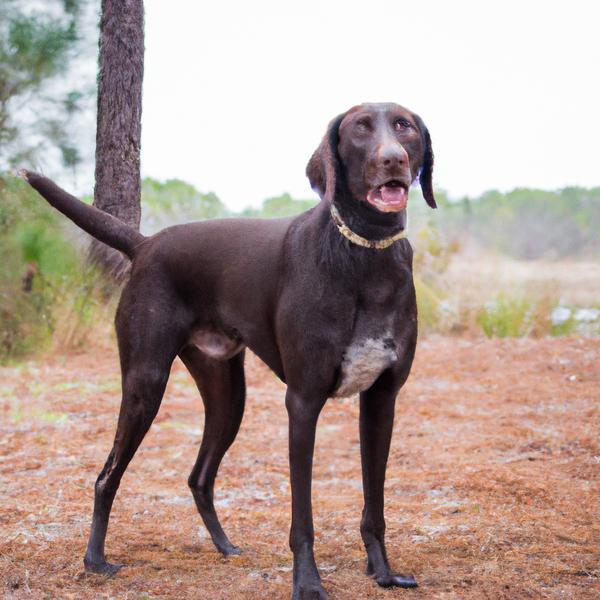
German Shorthaired Lab
Eskijack vs German Shorthaired Lab
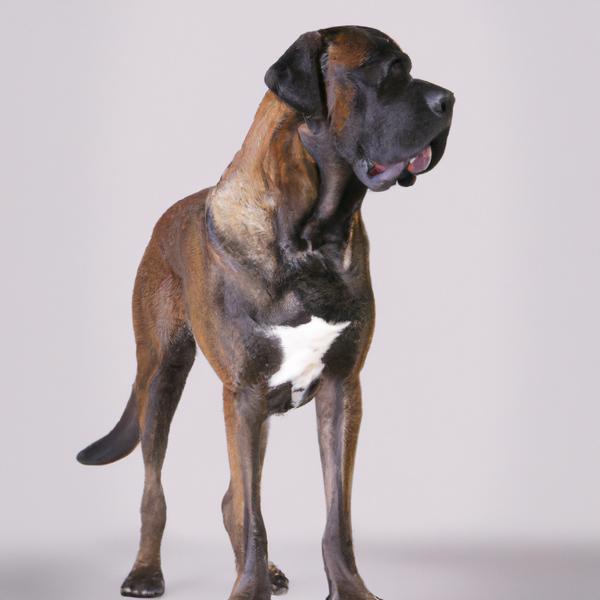
Neahond
Eskijack vs Neahond
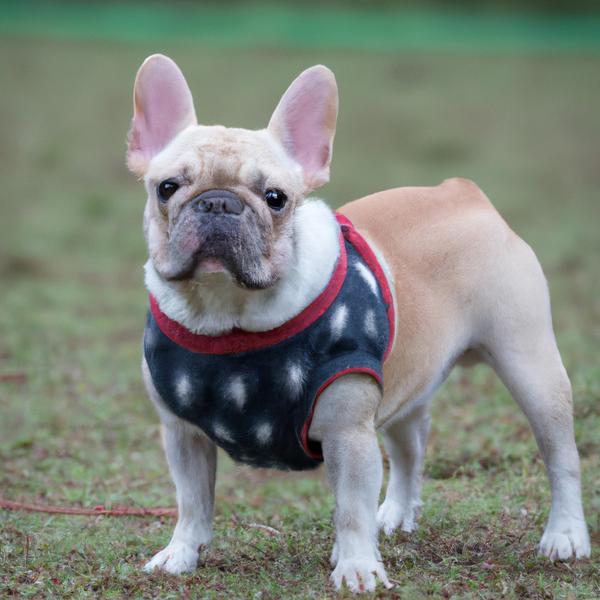
Frenchie-Pei
Eskijack vs Frenchie-Pei
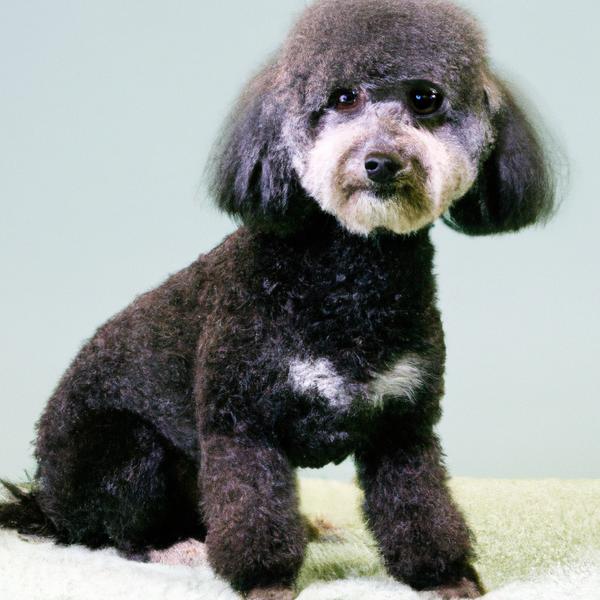
Pinny-Poo
Eskijack vs Pinny-Poo

Goldendoodle
Eskijack vs Goldendoodle
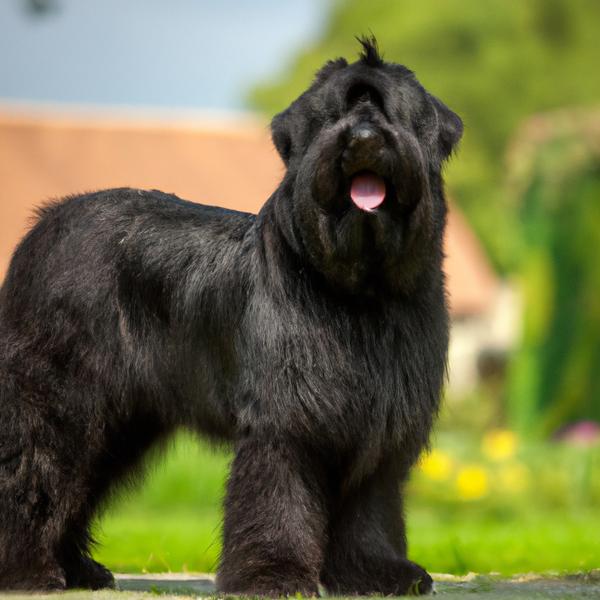
Giant Bolonauzer
Eskijack vs Giant Bolonauzer
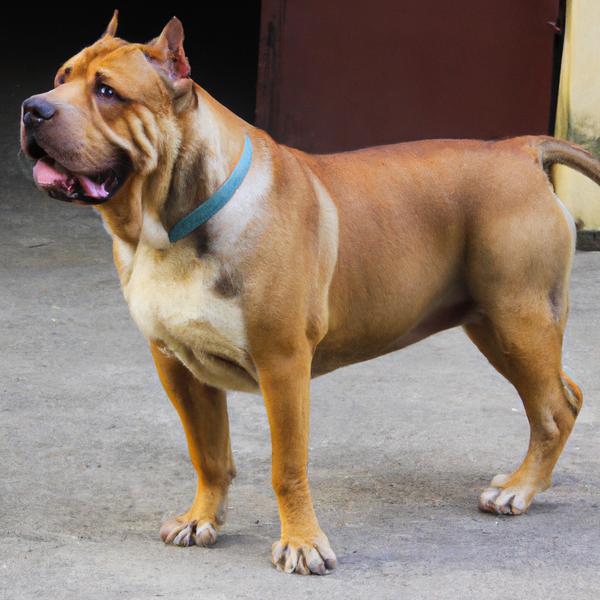
Masti-Bull
Eskijack vs Masti-Bull
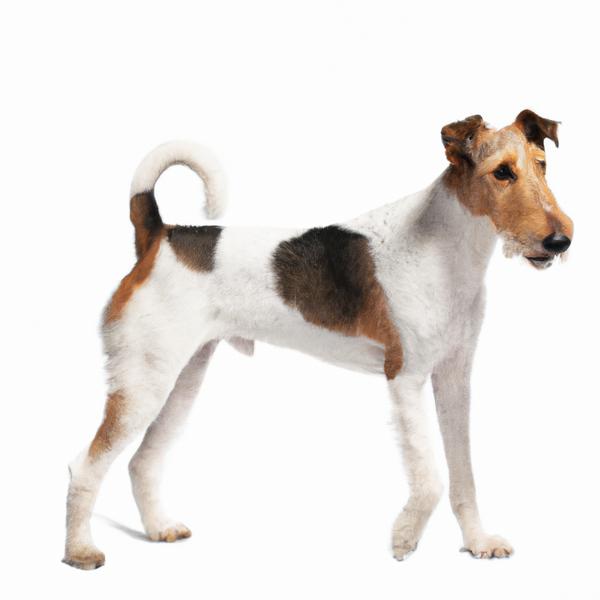
Smooth Fox Terrier
Eskijack vs Smooth Fox Terrier

Miniature Goldendoodle
Eskijack vs Miniature Goldendoodle

Afghan Bay Retriever
Eskijack vs Afghan Bay Retriever
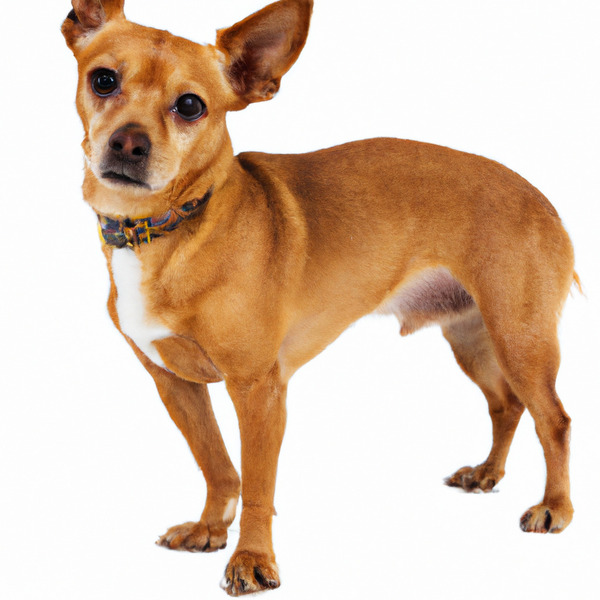
Taco Terrier
Eskijack vs Taco Terrier
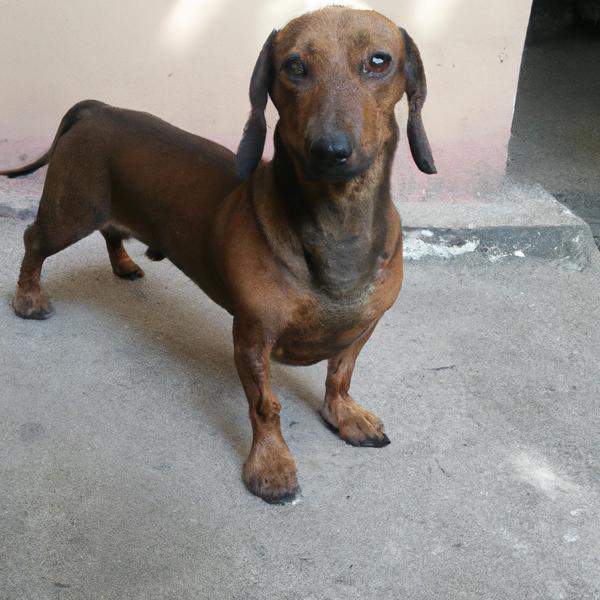
Papshund
Eskijack vs Papshund
